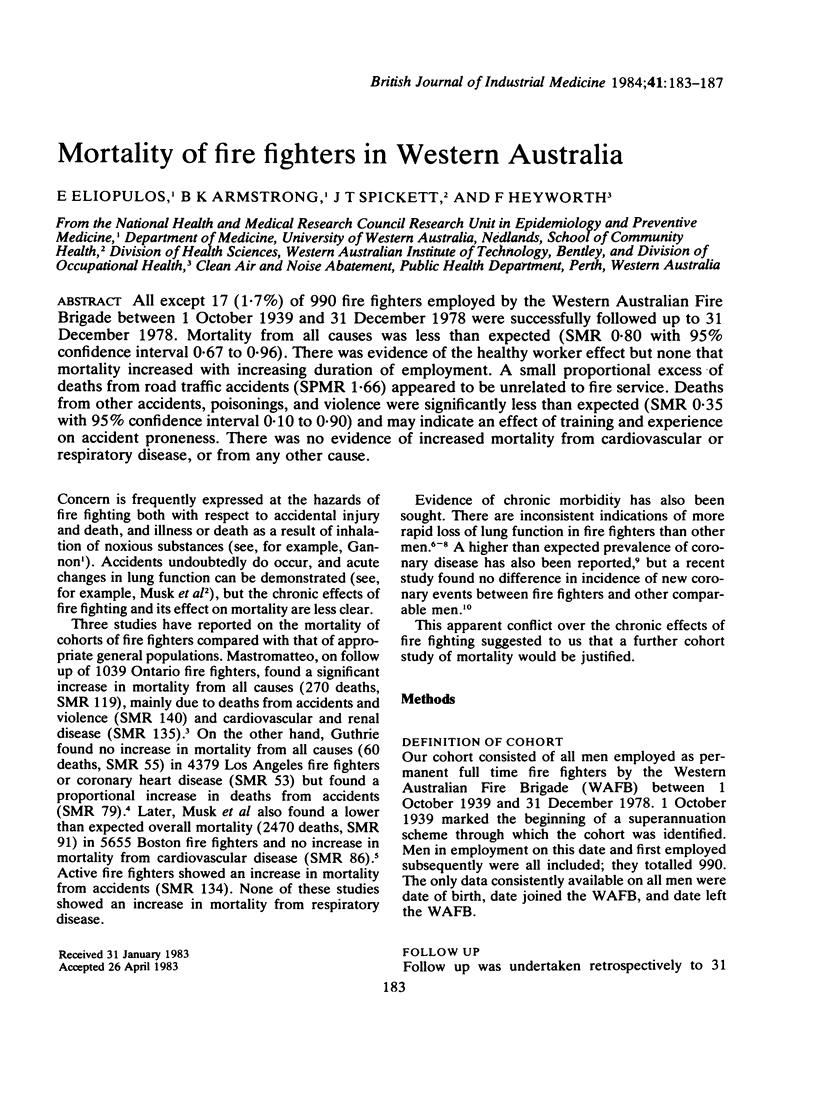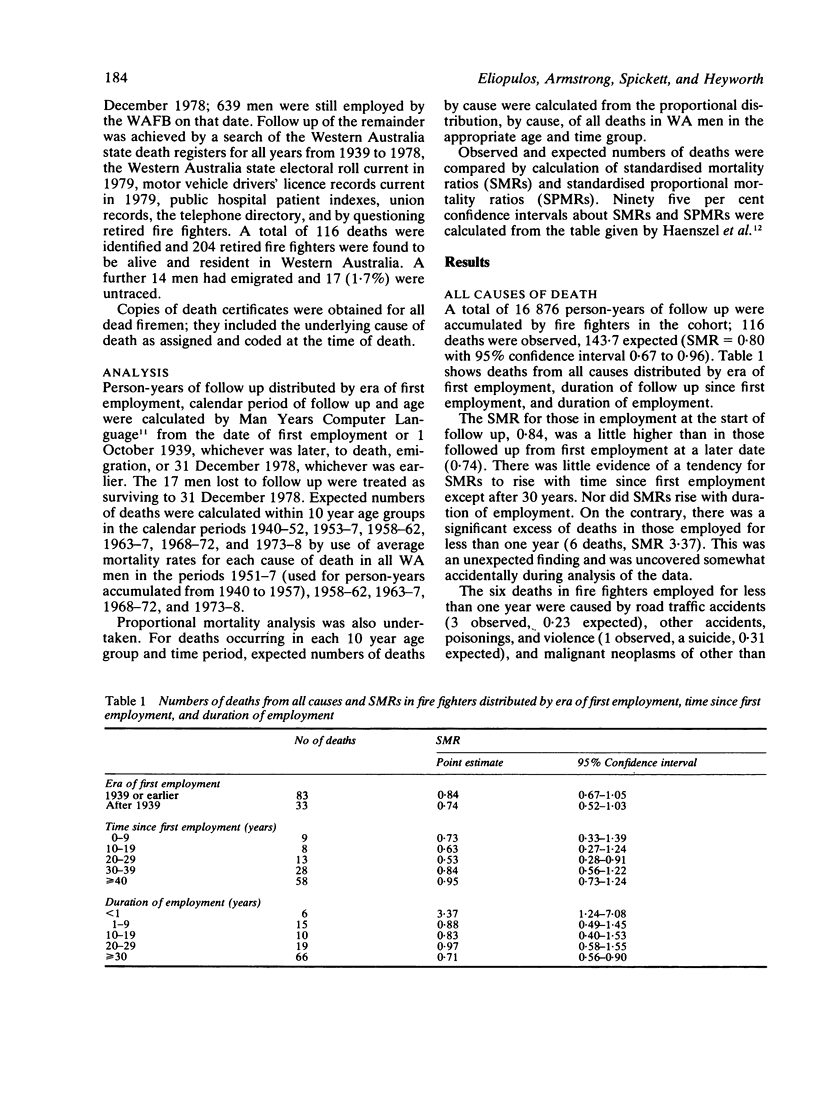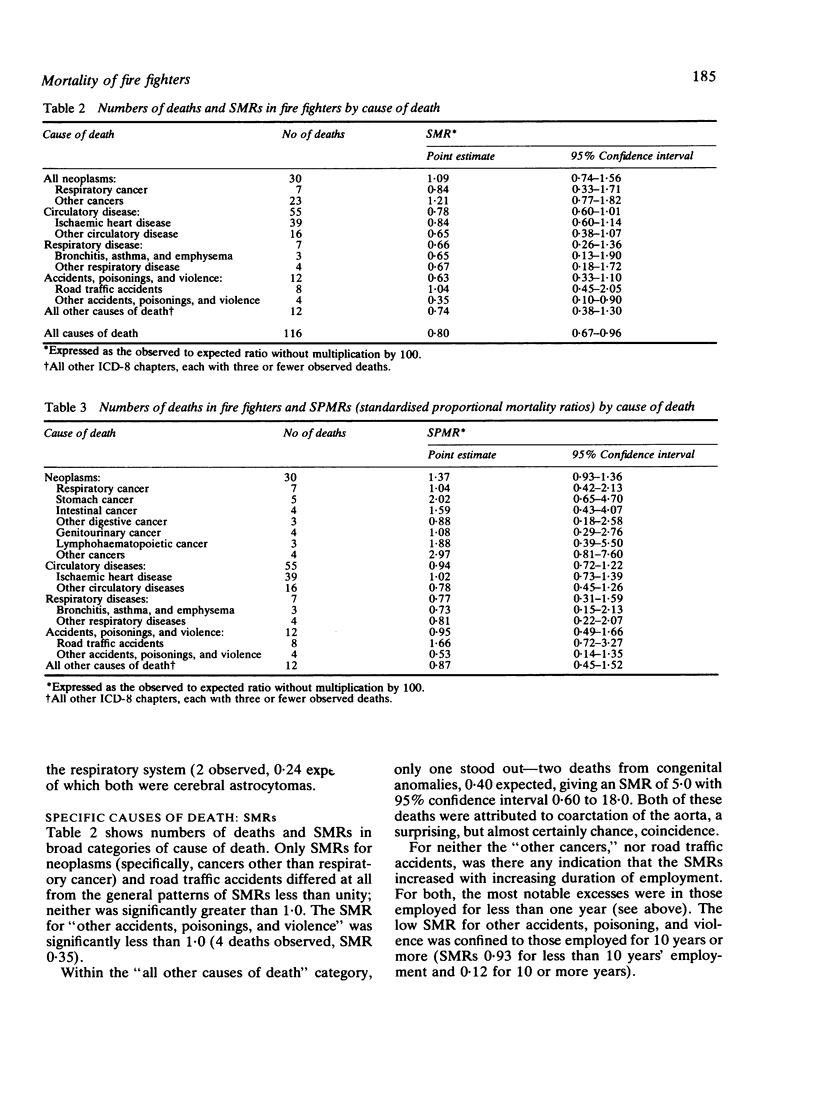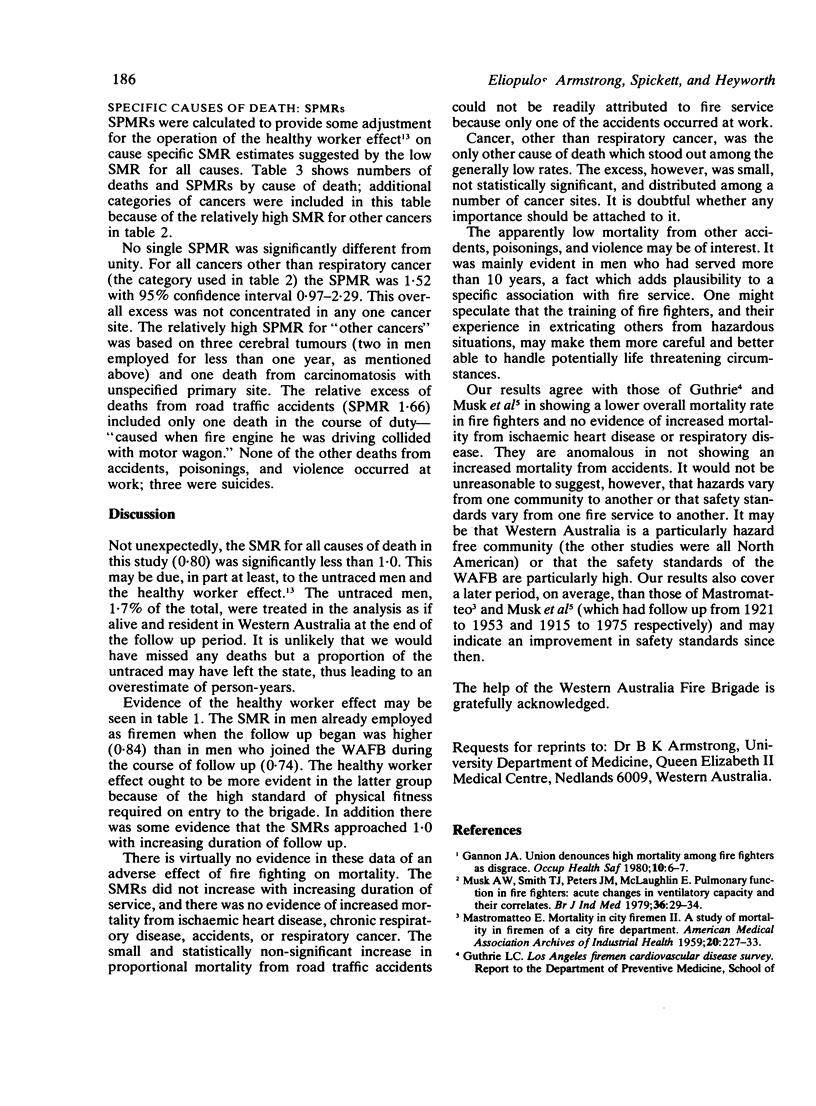Abstract
All except 17 (1.7%) of 990 fire fighters employed by the Western Australian Fire Brigade between 1 October 1939 and 31 December 1978 were successfully followed up to 31 December 1978. Mortality from all causes was less than expected (SMR 0.80 with 95% confidence interval 0.67 to 0.96). There was evidence of the healthy worker effect but none that mortality increased with increasing duration of employment. A small proportional excess of deaths from road traffic accidents ( SPMR 1.66) appeared to be unrelated to fire service. Deaths from other accidents, poisonings, and violence were significantly less than expected (SMR 0.35 with 95% confidence interval 0.10 to 0.90) and may indicate an effect of training and experience on accident proneness. There was no evidence of increased mortality from cardiovascular or respiratory disease, or from any other cause.
Full text
PDF




Selected References
These references are in PubMed. This may not be the complete list of references from this article.
- Barnard R. J., Weber J. S. Carbon monoxide: a hazard to fire fighters. Arch Environ Health. 1979 Jul-Aug;34(4):255–257. doi: 10.1080/00039896.1979.10667410. [DOI] [PubMed] [Google Scholar]
- Dibbs E., Thomas HE JrU, Weiss S. T., Sparrow D. Fire fighting and coronary heart disease. Circulation. 1982 May;65(5):943–946. doi: 10.1161/01.cir.65.5.943. [DOI] [PubMed] [Google Scholar]
- HAENSZEL W., LOVELAND D. B., SIRKEN M. G. Lung-cancer mortality as related to residence and smoking histories. I. White males. J Natl Cancer Inst. 1962 Apr;28:947–1001. [PubMed] [Google Scholar]
- Hill I. D. Computing man years at risk. Br J Prev Soc Med. 1972 May;26(2):132–134. doi: 10.1136/jech.26.2.132. [DOI] [PMC free article] [PubMed] [Google Scholar]
- MASTROMATTEO E. Mortality in city firemen. II. A study of mortality in firemen of a city fire department. AMA Arch Ind Health. 1959 Sep;20:227–233. [PubMed] [Google Scholar]
- Musk A. W., Monson R. R., Peters J. M., Peters R. K. Mortality among Boston firefighters, 1915--1975. Br J Ind Med. 1978 May;35(2):104–108. doi: 10.1136/oem.35.2.104. [DOI] [PMC free article] [PubMed] [Google Scholar]
- Musk A. W., Peters J. M., Wegman D. H. Lung function in fire fighters, I: a three year follow-up of active subjects. Am J Public Health. 1977 Jul;67(7):626–629. doi: 10.2105/ajph.67.7.626. [DOI] [PMC free article] [PubMed] [Google Scholar]
- Musk A. W., Smith T. J., Peters J. M., McLaughlin E. Pulmonary function in firefighters: acute changes in ventilatory capacity and their correlates. Br J Ind Med. 1979 Feb;36(1):29–34. doi: 10.1136/oem.36.1.29. [DOI] [PMC free article] [PubMed] [Google Scholar]
- Peters J. M., Theriault G. P., Fine L. J., Wegman D. H. Chronic effect of fire fighting on pulmonary function. N Engl J Med. 1974 Dec 19;291(25):1320–1322. doi: 10.1056/NEJM197412192912502. [DOI] [PubMed] [Google Scholar]


